
Amazon’s Elastic Compute Cloud (EC2) service – from Amazon Web Services has wide appeal owing to its flexibility to spin up compute power as quickly as a customer’s needs evolve. This popular Infrastructure as a Service (IaaS) option lets organizations deploy disparate workloads, from running web apps to DevOps development and testing environments. It also allows for the rapid readjustment of resources as needs change. But what is AWS EC2 security? The speed and scalability of EC2 can transform business operations, but only for those who take the time to architect security into every layer. This article outlines essential EC2 security strategies to keep clouds fast and secure.
Introduction to Amazon Elastic Compute Cloud (EC2)
Amazon EC2 is at the heart of many modern cloud architectures because it provides scalable virtual servers that power everything from web apps to databases to enterprise resource planning (ERP) systems. For cloud architects and IT decision-makers, EC2 is a natural choice to include in cloud setups (whether hybrid or public cloud) because it offers the agility to quickly provision essential compute resources that make agile business operations possible.
The flexibility that makes EC2 attractive can also create security blind spots if not managed carefully, though. Misconfigurations, open security groups, and unpatched vulnerabilities are common pitfalls that might leave your cloud environment exposed. Gartner’s bold prediction from a few years ago, that “through 2025, 99% of cloud security failures will be the customer’s fault,” appears to be playing out in reality.
“The security landscape has changed; everything is online and consolidated, which makes it an incredibly irresistible target for attackers.”
Joshua Burgin I Chief Product Officer, Upwind
The AWS Shared Responsibility Model is pertinent for EC2 security because it outlines a clear division of security responsibilities between AWS and its clients, companies that must secure parts of this increasingly vast, and increasingly vulnerable, ecosystem.
Under this model, AWS takes on the responsibility of securing the underlying infrastructure that powers EC2, which includes physical servers, data center facilities, and the hypervisors that virtualize the physical resources. AWS uses security measures, such as hardware-based isolation, encryption, and virtualization, to protect the infrastructure layer. The hypervisor and everything below it — physical servers, networking hardware, and data center security — is solely AWS’s responsibility.
However, above the hypervisor, the responsibility shifts to AWS customers. Businesses using EC2 must manage and secure operating systems, applications, network configurations, and any data they process or store. That includes patching and updating the OS, configuring firewalls, managing network access controls, encrypting sensitive data, and ensuring application security. For instance, if a vulnerability is introduced within an application due to improper configurations, it is the customer’s responsibility to address and remediate this risk.
With EC2, AWS provides a secure infrastructure, but the integrity of what runs on that infrastructure is entirely dependent on the diligence of the customer.
Common Security Challenges in AWS EC2
One upshot of the shared responsibility model is that AWS secures the foundation. However, organizations build the structure for EC2 security. They need to think about security at every level of their EC2 deployment — from instance hardening and network isolation to automated backups and role-based access control. AWS provides its own useful set of tools and features to help out, but the security of workloads relies on how well organizations meet some of the following EC2 security challenges.
Misconfigurations and Unauthorized Access
Misconfigured security groups or improper IAM (Identity and Access Management) roles are some of the most common missteps. For example, leaving SSH ports (22) open to the internet or setting overly broad permissions on S3 buckets linked to EC2 can create direct paths for attackers.
AWS Config can help flag risky configurations, but teams must still enforce best practices across instances. A recent incident involving threat actors targeting exposed files is a stark reminder of the vulnerabilities that can arise from poor configuration practices. According to a recent Hacker News report, a misconfigured AWS cloud environment led to a large-scale breach where attackers exploited a web application vulnerability to expose sensitive data from more than 230 million unique records. This incident, confirmed by a cybersecurity researcher rather than AWS itself, highlights how misconfigured cloud infrastructures can be leveraged by bad actors to target massive datasets effectively.
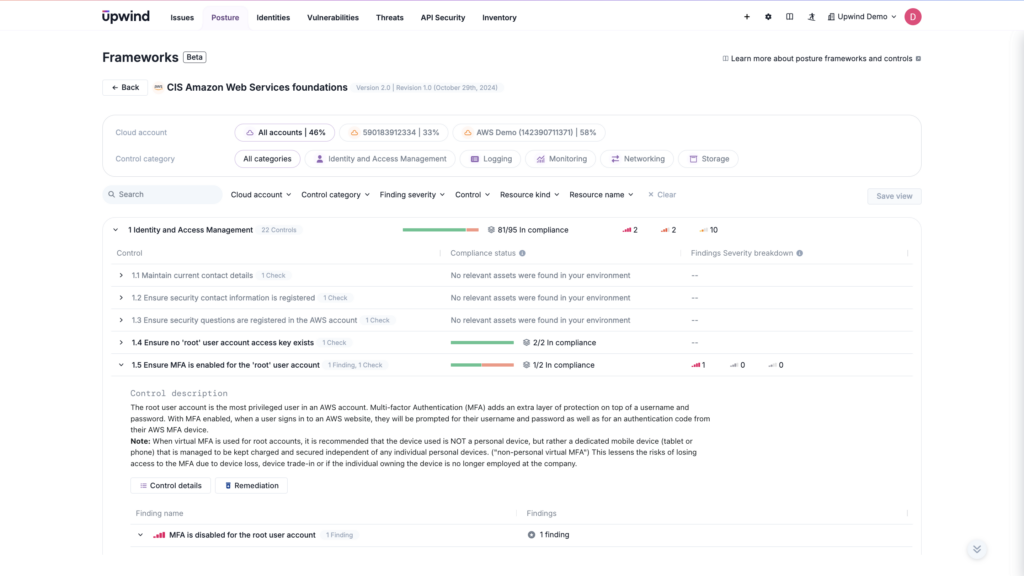
Insecure APIs and Data Protection Issues
Many EC2 workloads depend on APIs for communication, making secure API configurations essential to protecting against vulnerabilities. AWS services like Gateway offer built-in security features, such as throttling to limit request rates and authorization headers to control access, which helps guard against DDoS attacks and unauthorized data access.
When public-facing EC2 instances use API Gateway of other API integrations, implementing configurations like VPC Endpoints for private, secure access is crucial. Properly managing these AWS-native configurations minimizes risks of data leaks or breaches, underscoring that misconfigurations, rather than gaps in AWS services, are key security risks.
The dynamic nature of cloud environments heightens data protection challenges. EC2 instances can frequently scale up or down, which complicates the management of sensitive data across your chosen storage options for these workloads, such as EBS volumes and S3 buckets. Consistently encrypting at rest and in transit becomes more complex as organizations provision new instances, particularly if they don’t effectively manage encryption keys.
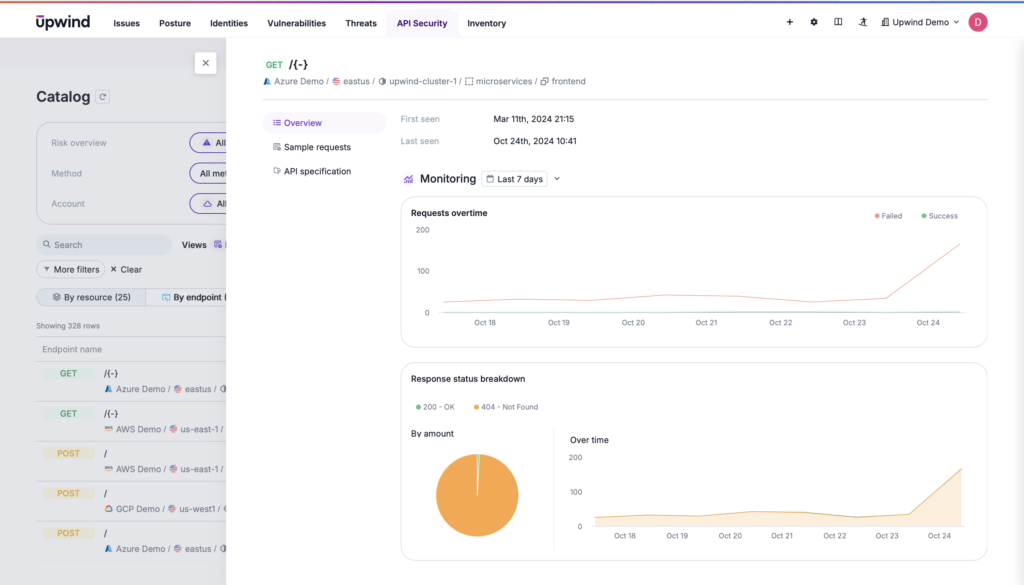
Lack of Visibility and Control
Monitoring EC2 instances involves more than just turning on CloudTrail. Teams need detailed metrics, log analysis for network traffic visibility, and the ability to detect anomalies. Without full visibility, they might miss key indicators of compromise. Compounding the challenge in environments with many EC2 instances is that security alerts become noisy without proper tuning. In other words, organizations that lack a clear view of what’s happening inside their instances lose control over potential threats.
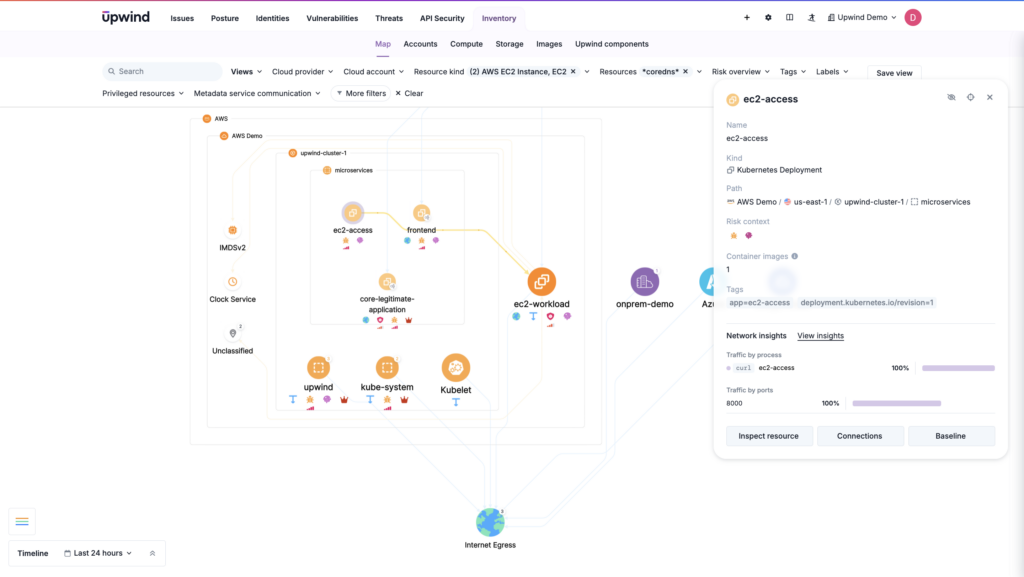
Shared Resource Vulnerabilities
Running multiple EC2 instances within a shared VPC can introduce risks of lateral movement, particularly if security configurations are mismanaged. In cases where one instance is compromised due to a misconfigured security group, attackers may be able to pivot within the VPC environment, gaining unauthorized access to other resources.
However, shared services like RDS have dedicated resources and built-in isolation that provide more robust separation than a shared VPC alone. RDS instances, for example, run in isolated environments that mitigate lateral movement risks, so accessing an RDS database from a compromised EC2 instance would still require bypassing RDS-specific security controls.
or using AWS services like RDS within the same environment can create lateral movement risks. If one instance is compromised due to a misconfigured security group, attackers could pivot within the AWS environment.
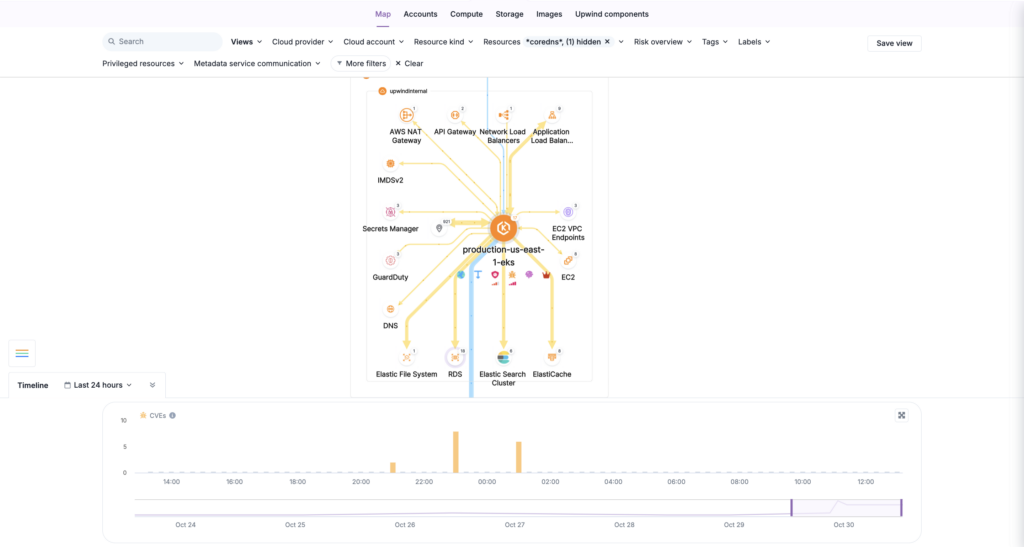
Outdated Software and Unpatched Systems
When you launch an EC2 instance, you have full control over the operating system and any applications running on it. This means that it’s up to you to keep the OS, libraries, and applications updated. Failure to do this leaves your instances vulnerable to exploitation. For example, if you’re running outdated web servers to run a web app, attackers could take advantage of known vulnerabilities.
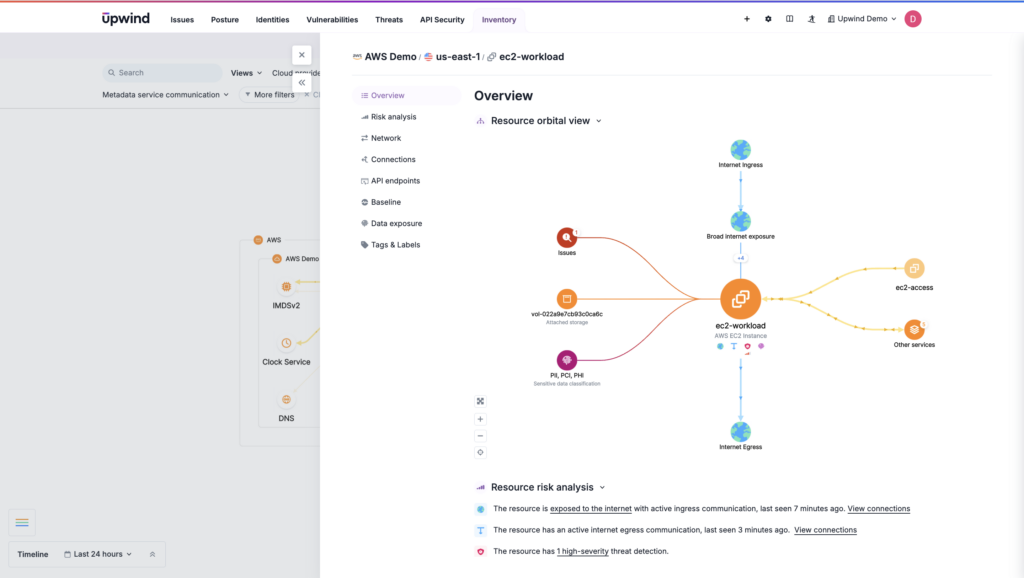
Key Components of EC2 Security
Once EC2 instances are up and running, security starts with an understanding of the tools that come integrated into AWS EC2 but which require configuration and management to help you stay ahead of potential risks. Below is an overview of these essential tools:
| Component | Description and Actions to Take |
| Security groups | These act as virtual firewalls for EC2 instances, allowing you to set specific inbound and outbound rules. Use least privilege principles to ensure that you only allow necessary traffic. This minimizes the risk of attackers exploiting misconfigured rules to gain unauthorized access to your instances. |
| Network access control lists (NACLs) | These act as virtual firewalls at the subnet level in AWS, controlling inbound and outbound traffic for all instances within a subnet. Use least privilege principles to ensure that you only allow necessary traffic. This minimizes the risk of attackers exploiting overly permissive rules. It’s important to note that Security Groups provide more granular, instance-level control, like allowing tighter security configurations around each instance, while NACLs act at the broader network level. |
| Identity and access management (IAM) | IAM allows you to create and manage user identities and their associated permissions. Establish role-based access controls and apply permissions only as needed. Effective IAM use overcomes the risk of unauthorized access and eases the challenge of managing access for multiple users and services (this includes non-human identities, too, like service accounts). |
| Encryption and key management | Encryption protects sensitive data at rest and in transit. Enable EBS encryption for volumes and use SSL/TLS for data in transit to safeguard data from unauthorized access, even if an attacker gains access to the underlying EC2 instance. Key management ensures only authorized users and services can decrypt and access certain data. |
By implementing these practices, organizations ensure AWS components reinforce EC2 security. Regular audits and updates are also crucial as organizational environments scale.
Best Practices for Securing AWS EC2 Instances
While AWS provides core components like security groups, IAM, and NACLs to secure EC2 instances, fully protecting your environment requires additional measures that build on these tools. These proactive steps address common risks.
- Least privilege: Grant users the minimum level of access necessary to perform their duties to reduce the risk of unauthorized access.
- Patch management: Apply patches on time to the operating system and apps you run on EC2 instances to protect against known vulnerabilities.
- Encryption: Use encryption for data stored on EC2 instances and during transmission to safeguard sensitive information.
- Monitoring and logging: Track access and changes to your EC2 instances. Use tools like AWS CloudTrail to maintain an audit trail for compliance and security reviews.
- Multi-Factor Authentication (MFA): Require MFA for IAM users and access to EC2 instances to add an extra layer of security against compromised credentials.
- Network Security and segmentation: Use VPCs, security groups, and NACLs to segment your network and restrict access to EC2 instances or workloads based on specific rules.
Advanced EC2 Security Strategies
After establishing essential security measures, some scenarios require deeper visibility and stronger defenses to manage more complex risks. Advanced strategies tackle challenges like detailed traffic inspection, DDoS protection, and strict workload isolation, which go beyond baseline configurations. These tactics strengthen defenses and offer deeper resilience against sophisticated threats that standard practices may not cover.
1. Monitor Network Traffic
Network traffic monitoring offers visibility into network interactions, which helps detect suspicious patterns or anomalies across cloud environments, such as lateral movement attempts.
Real-time, context-aware monitoring across cloud workloads can improve on Amazon’s AWS VPC Traffic Monitoring tools, which are limited to specific instances or interfaces and require complex configurations such as packet mirroring and other specific AWS networking setups. Holistic runtime monitoring simplifies management, providing continuous insight without individual instance configurations.
2. Protect Against DDoS Attacks
AWS Shield offers two levels of DDoS protection: Shield Standard and Shield Advanced. Shield Standard provides basic, free protection against most common network and transport layer DDoS attacks, automatically integrated into AWS services like Elastic Load Balancing (ELB) and Amazon CloudFront. For additional tailored defenses, Shield Advanced requires specific service configurations and may need continual tuning to address evolving application-layer threats effectively.
A runtime approach, by contrast, offers broader visibility and continuous adaptation to threats as they emerge within application traffic. This real-time monitoring allows quicker, context-aware responses, reducing the complexity of managing separate DDoS configurations across different cloud services.
3. Filter and Monitor HTTP/S Requests
A web application firewall (WAF), like AWS WAF, adds an additional security layer, helping filter and monitor HTTP/S requests and blocking attempted attacks like SQL injection and cross-site scripting (XSS) before they reach web applications.
However, the AWS WAF approach can be challenging in complex environments, as it relies on static, rule-based defenses and requires manual updating to address new vulnerabilities or application changes. In contrast, a runtime-powered approach can complement a WAF approach, adding context-aware filtering that identifies emerging threats in real time.
4. Implement Instance Isolation Techniques
Properly segment your workloads by isolating instances to reduce the potential blast radius of a security incident. Techniques include using dedicated hosts or instances to physically isolate your EC2 instances for sensitive workloads.
You can enable Enhanced Networking with Elastic Network Adapter (ENA) or Single Root I/O Virtualization (SR-IOV) for better network performance, which is particularly helpful for multi-tenant architectures where high-speed networking and efficiency are essential for compliance or data security.
While ENA and SR-IOV can improve network throughput and reduce latency, they do not directly isolate workloads; isolation primarily relies on other network configurations applied to the ENA device and the broader AWS environment. Strengthening security in tn these environments requires additional configurations, such as visibility and anomaly detection across workloads, which help build a comprehensive and resilient security model for isolated instances.
Monitoring and Responding to Threats in AWS EC2
Let’s move the discussion beyond setup and prevention to active threat detection and incident response — critical for minimizing the impact of a breach.
IBM’s annual updated cost of the average data breach is one of the most widely cited in cybersecurity. But what sometimes gets lost is its findings about what reduces these costs. The largest figures show that optimized incident response saves $2.66 million per breach.
So, what are your options for monitoring and responding to threats in AWS EC2?
Enhance Visibility
Within EC2, AWS CloudTrail records all API calls, which allows users to trace user activities and detect anomalies. When paired with AWS CloudWatch, which monitors resource performance and sets alarms for unusual patterns, these tools empower teams to respond swiftly to potential threats.
However, while this setup is useful for visibility, CloudTrail and CloudWatch focus on logs and performance metrics. A comprehensive cloud-native application protection platform (CNAPP) offers an enhanced view with continuous vulnerability scanning, workload behavioral analysis, and real-time threat detection. That insight can identify emerging patterns that static monitoring tools might miss.
Set Up Automated Responses and Alerts
Automation streamlines threat response workflows, reducing manual intervention. By configuring CloudWatch Alarms and integrating them with AWS Lambda, you can initiate automatic actions for specific triggers, such as isolating an instance during a traffic surge to prevent compromise. This proactive approach minimizes response times and reduces the likelihood of human errors.
However, automation with runtime insights from a CNAPP enhances the process by refining response actions based on real-time threat context, enabling more precise, adaptive responses to emerging threats across cloud workloads.
Implement a Comprehensive Network Monitoring Strategy
Collect logs from various sources, such as EC2 instance logs and Amazon VPC Flow Logs, to capture a thorough view of network traffic and user actions. Regularly analyze these logs to identify suspicious activity or configuration errors. Integrating logs with a Security Information and Event Management (SIEM) system can also enhance your threat detection capabilities.
Another option for network monitoring is the use of sensors that are based on eBPF, which allow organizations to monitor activities at the packet level rather than relying on VPC Flow Logs, which can be costly. eBPF-based CNAPPs like Upwind monitor EC2 network traffic in real time with an eBPF sensor and then correlate that data with real-time application behavior context, enabling a more adaptive response to potential threats.
Conduct Regular Security Audits and Assessments
Schedule routine security audits to evaluate your EC2 security posture, and consider tools like AWS Inspector and AWS Config to assess your resources against industry best practices and compliance requirements. Regular audits help uncover vulnerabilities, misconfigurations, and areas needing improvement.
While these audits reveal static security gaps, integrating a CNAPP that leverages runtime insights enhances this approach by continuously monitoring for changes and dynamically identifying risks as they emerge. This ongoing visibility and assessment allows teams to address issues quickly rather than waiting for periodic audits.
EC2 Security Group Best Practices
In addition to securing AWS EC2 instances, let’s focus on configuring security groups — EC2’s virtual firewalls — to minimize exposure and control traffic more effectively.
Minimize the Use of Default Security Groups
Default security groups often have broad permissions, which can lead to unintended exposure of EC2 resources. Instead, create custom security groups tailored to your workload’s specific needs, limiting traffic access to only what’s necessary. This practice helps reduce the attack surface.
A new challenge comes from manually managing these settings across multiple groups and applications, leading to oversights. Enhance this approach with a CNAPP that can dynamically adapt access policies based on real-time insights, continuously aligning permissions to the needs of each workload.
Restrict Inbound and Outbound Traffic
Minimizing exposure to threats requires tightly controlling which IPs, protocols, and ports can connect to your EC2 instances, but configuring these rules without disrupting valid traffic can be complex. AWS Security Groups allow you to define strict inbound and outbound rules.
Use strict rules to control inbound and outbound traffic, allowing only necessary connections. Security groups should deny all traffic except what you explicitly permit, and this should be defined based on specific IP addresses, protocols, and ports relevant to the particular workload being secured.
Further reduce risk with a CNAPP or runtime-driven platform that offers dynamic insights, adjusting traffic rules based on real-time behavior and reducing risk even more.
Use Standardized Naming Conventions
It might seem like a minor point, but a clear naming scheme allows team members to quickly identify the purpose and associated resources of each security group, without which the likelihood of misconfiguration or overlooked security policies increases.
Consider a generic name like sg-12345678 versus a clear, informative one like WebServer-SG-Prod; the latter aids in clarity, manageability, and consistency, while the former might just cause confusion. AWS allows custom names for security groups so teams can easily label resources.
A runtime-aware approach enhances this practice, organizing resources with detailed context on groups, simplifying management.
Network Security for EC2 Instances
In cloud environments like EC2, infrastructure scales dynamically and interfaces with other sub-networks and wider networks like the Internet. That dynamism requires robust network security practices to keep data safe from attackers who search for and exploit vulnerable entry points (like open ports). Network security in EC2 environments is about actively controlling, monitoring, and defending every connection interacting with your instances.
Broad IP ranges (e.g., “0.0.0.0/0”), permissive rules, and exposed ports increase security risks in EC2 environments, especially when blanket rules are applied across subnets.
AWS NACLs enable IP range restrictions for incoming traffic. For instance, admins can limit SSH access to a trusted IP and apply subnet-specific NACLs based on workload needs, improving control over traffic flows.
A CNAPP adds context-aware monitoring, dynamically adjusting rules based on real-time activity and flagging misconfigurations. It helps ensure that only essential IPs, protocols, and ports are permitted, continuously minimizing exposure to threats.
Compliance and Regulatory Considerations for EC2 Security
When deploying on AWS, meeting regulatory standards like GDPR, HIPAA, and PCI-DSS is crucial. Failure to comply not only risks hefty fines but also damages your organization’s reputation. While AWS provides built-in features and certifications to support regulatory compliance — such as audit logs, managed access controls, and data encryption — customers are responsible for configuring and managing these features to maintain compliance for their specific applications.
Since different jurisdictions have varying requirements for data residency and handling, selecting the appropriate AWS regions and understanding local data protection and sovereignty laws are essential steps. One business consultant notes, “On the security and compliance side, we’ve gone away from discussing how that is the hugest barrier to using public cloud services. Now you have a lot more advanced conversation on what the right controls are and what the right standards are to protect information in the public cloud.”
The cloud is here to stay, so security tools need to offer comprehensive visibility, tracking, and policy enforcement to make managing it effectively an attainable goal.
Future Trends in EC2 Security
The cyber security and cloud worlds, like the wider world of technology, can be unpredictable. But here are some future trends worth thinking about and how they might impact your EC2 security strategy:
- A surge in sophisticated cyber threats. Expect more sophisticated, long-term attacks like advanced persistent threats (APTs) in which attackers maintain long-term, continuous access to a system for an extended period. Russian group APT29 recently shifted its TTPs to look for cloud vulnerabilities, which led to an advisory being published by the UK’s National Cyber Security Centre (NCSC). This points to a move towards more integrated, holistic solutions that can secure your cloud, workloads, and apps and respond to threats in real time.
- Machine learning models will automate more workflows, analyze patterns in user behavior, and identify irregularities that might indicate a breach. This will also ease the Sisyphean tasks that cloud security teams face in managing alerts and responding to incidents, which can often feel overwhelming given the volume of data generated in cloud environments.
- As more companies adopt serverless architectures, they face unique security challenges that differ from traditional EC2 security obstacles. Serverless environments are dynamic, and resources are ephemeral; security must focus on tools that provide visibility across serverless functions.
Upwind Enhances AWS EC2 Security
EC2 security is critical for safeguarding your cloud architecture, from hosting apps to managing data and running critical workloads while facing evolving threats and compliance demands. Challenges such as misconfigurations, insecure APIs, and inadequate visibility highlight the need for robust security practices and tools. Ultimately, teams need to cover the basics, such as the effective use of security groups and network ACLs, and adopt more advanced strategies and unified tools for protection.
Upwind’s next-generation CNAPP protects apps running in AWS EC2 environments while elevating security posture across the cloud landscape. By combining the power of cloud security posture with runtime context and real-time protection, Upwind empowers your team to pinpoint critical risks swiftly and respond with precision. Get a demo to see how.
FAQ
How does EC2 security differ from traditional on-premises server security?
EC2 security relies on virtualized environments, where security measures are primarily software-based rather than tied to physical hardware. In traditional on-premises server security, hardware firewalls, intrusion detection systems, and physical access controls handle security functions rather than the security groups and IAM roles of EC2.
What are the key differences between Security Groups and Network ACLs in EC2?
Security Groups and Network ACLs (NACLs) serve different but complementary roles in securing EC2 environments. Security groups act as virtual firewalls at the instance level, controlling inbound and outbound traffic specific to each EC2 instance. They are stateful, meaning that if an inbound rule allows traffic, the corresponding response traffic is automatically allowed back out, simplifying configuration for bi-directional communication.
In contrast, Network ACLs operate at the subnet level, offering broader control by filtering traffic entering or leaving entire subnets. NACLs are stateless, so inbound and outbound rules must be configured separately for both directions. This makes NACLs suitable for applying blanket protection across multiple instances within a subnet, which adds an additional layer of security atop instance-specific Security Group rules.
How can I implement a layered security approach for my EC2 instances?
Start by establishing strong IAM policies and enforcing least privilege access controls. Use security groups and NACLs for network segmentation while regularly patching and updating software to eliminate vulnerabilities. Finally, incorporate monitoring tools to continuously assess your security posture and respond to incident
s swiftly.
What tools does AWS provide for EC2 security monitoring and management?
AWS CloudTrail audits API calls, and Amazon CloudWatch monitors resource performance and sets alerts. AWS Inspector evaluates the security state of your EC2 instances against best practices, while AWS Systems Manager helps automate patch management and compliance checks.
How do I secure EC2 instances in a multi-cloud or hybrid cloud environment?
Securing EC2 instances in a multi-cloud or hybrid cloud environment requires a unified strategy that ensures consistent security policies across different platforms. One challenge is maintaining consistent IAM policies across clouds, as identity and access management configurations can vary between providers. Additionally, multi-region data residency requirements must be managed to comply with regulations on where data can be stored or processed, as different regions or providers may impose specific data handling guidelines.
Solutions like CNAPPs can centralize cloud security management, providing visibility and control over cloud workloads and resources and enforcing policies across diverse cloud workloads. CNAPPs can streamline IAM policy management and ensure data residency and compliance controls are consistently applied. It all leads to fewer risks in multi-cloud and hybrid deployments.






